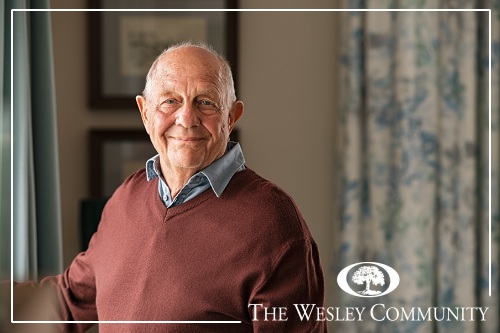Is it time for a parent to move to assisted living? Here are a few of the warning signs that indicate the answer might be yes.

Loved ones often become caregivers for a senior family member over time. It might begin when you assist with small tasks, such as picking up groceries once a week or stocking the freezer with thaw-and-heat meals. As the older adult’s health worsens, their need for assistance increases.
Sometimes, because the decline is so gradual, loved ones providing care might not realize how many tasks they’ve taken on. One day a family caregiver experiences a health crisis of their own and finds that it’s linked to exhaustion and stress.
Other times, families are separated by great distances. Although they talk to their senior loved one often, in-person visits are less frequent. During these phone calls the elder sounds good and repeatedly assures family members that everything is “fine.” However, a trip to spend time with the aging loved one reveals the situation isn’t as stable and safe as previously imagined.
If you are wondering what signs indicate it’s time to encourage a senior to make a change, we have some suggestions on what to look for when you’re together.
Is It Time for Assisted Living?
While assisted living offers many benefits beyond health and physical safety, these communities are designed to provide a safe environment staffed by around-the-clock caregivers. For an older adult, this can be an ideal solution. By accepting help with a few essential tasks, the senior is able to live in their own apartment or suite longer than if they continued to live in their original home.
Here are a few red flags that indicate it’s time for a move to an assisted living community:
- Growing fall risk
Research repeatedly confirms that falls are the leading cause of fatal and nonfatal injuries among seniors. Unfortunately, most older homes aren’t designed for senior safety. Stairs and bathtubs are places older adults often experience falls. If a senior has lived in the same home for a long time, there may also be unaddressed maintenance issues that put them at risk. Uneven stair treads, lack of grab bars, poor lighting, and inaccessible bathtubs are common hazards. If your senior loved one has become a little unsteady on their feet, each of these potential problems can be even more dangerous.
- Increasingly isolated
When a senior has mobility challenges or a lack of transportation, they might be spending more and more time alone at home. Loneliness and isolation may be the result. While loneliness is never good, isolation is a much more serious health risk. In fact, researchers say isolation is linked to higher incidences of heart disease, diabetes, depression, obesity, and more. By moving to a more accessible environment with on-site activities and social events, an older adult can protect their physical and mental well-being.
- Medication mistakes
Seniors typically take more prescription and over-the-counter medicines than younger adults. Managing medication schedules and staying on track with ordering refills can become challenging. It can also result in an older adult taking too much of a medication or not enough of another. These mistakes can lead to a hospital emergency room visit. Another benefit of moving to an assisted living community is the medication management program. Care team members oversee both the dosage and schedule of resident medication. They order refills as well. This support reduces the risk for dangerous medication errors.
- Unhealthy diet
For seniors, especially those who are struggling with health issues, cooking healthy can seem like too much work. It’s much easier to rely on processed foods, such as lunchmeat or frozen dinners, and take-out meals. While these are convenient choices, they can exacerbate existing medical problems. Maintaining good nutrition is essential for fighting off viruses and for preventing falls. Assisted living communities have dining programs that focus on meals that are both nutritious and delicious. New residents who’ve been struggling with poor nutrition often find themselves feeling better after only a few weeks at their new community.
- Caregiver health
Finally, it’s important to be honest about how you are doing. Being responsible for a loved one’s health and wellness is a big responsibility. Caregiving can become a 24/7 job—it is mentally, physically, and emotionally exhausting. Even when it’s something you want to do for someone you love, the demands of caregiving might reach a point where it just isn’t sustainable.
Caregivers often experience greater incidences of back problems, digestive issues, and migraines than noncaregiving peers. If your personal health is declining, it might be time to explore local assisted living communities for your aging loved one.
Assisted Living in Saratoga Springs
If your search for an assisted living community includes the Saratoga Springs, New York area, we invite you to consider The Wesley Community. We offer a full continuum of care on our campus. Call (518) 587–3600 today to learn more!

